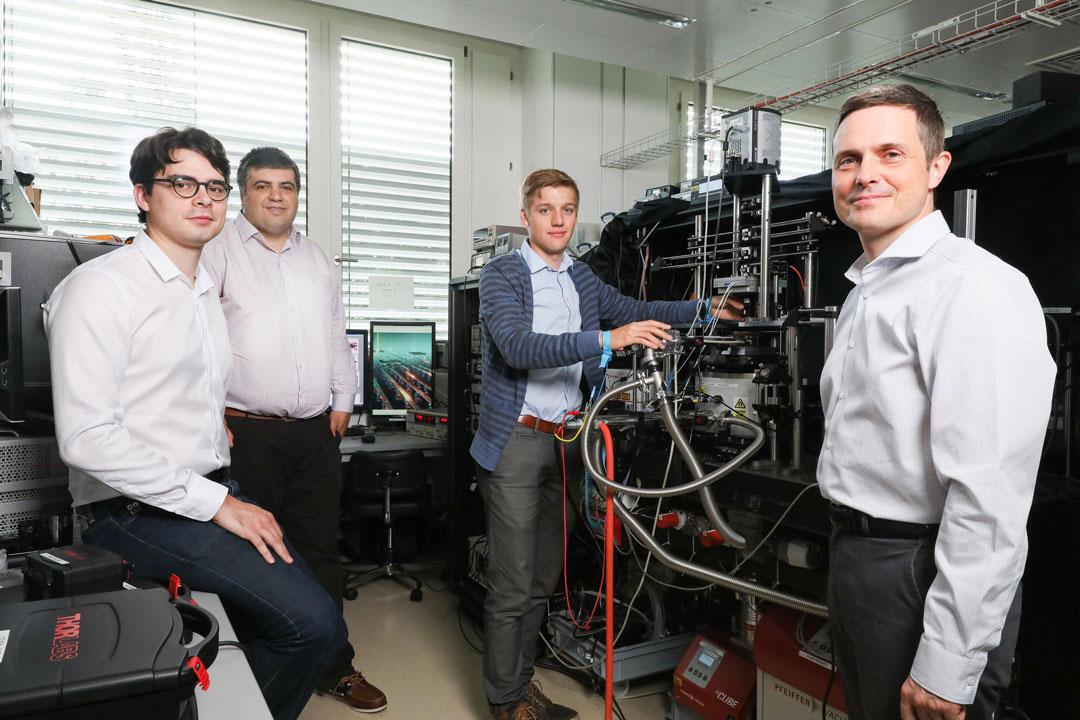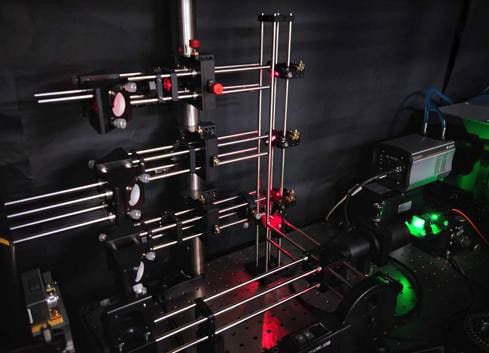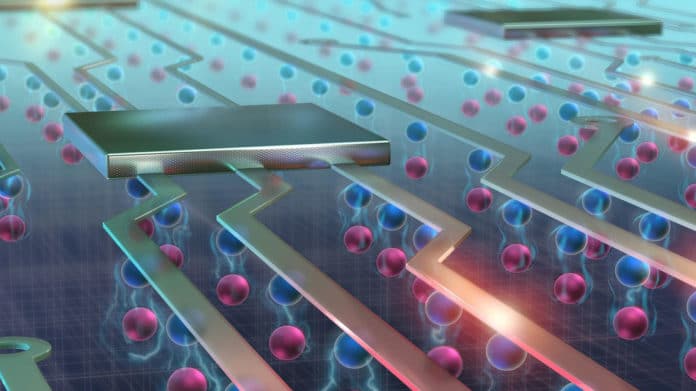Excitons could revolutionize the manner in which engineers approach electronics. Earlier, EPFL scientists have successfully controlled exciton flows at room temperature. Now, they have taken one step further by controlling some properties of excitons.
According to scientists, this discovery could pave the way towards a new generation of electronic devices with transistors that undergo less energy loss and heat dissipation.
Excitons can be generated when electrons absorb light and moves in high energy level similarly as the way in solid quantum physics. This makes electrons leave their electron hole in its previous energy band. And because the electron has a negative charge and the hole a positive charge, the two are bound together by an electrostatic force called a Coulomb force. It’s this electron-electron hole pair that is referred to as an exciton.

Alberto Ciarrocchi, Ahmet Avsar, Dmitrii Unuchek and Andras Kis.© A.Herzog, EPFL 2018 EPFL
Excitons exist only in semiconducting and insulating materials. And their extraordinary properties occur only when they are used in 2D materials, which are materials whose basic structure is just a few atoms thick. The most common examples of such materials are carbon and molybdenite.
At the point when such 2D materials are combined, they frequently show quantum properties that neither materials possess on its own.
The EPFL scientists consequently combined tungsten diselenide (WSe2) with molybdenum diselenide (MoSe2) to uncover new properties with a variety of conceivable cutting-edge applications.

By utilizing a laser to produce light waves with circular polarization, and somewhat moving the places of the two 2D materials to make a structure with a shimmering surface, they had the capacity to utilize excitons to change and manage the light waves’ polarization, length, and intensity.
Scientists achieved this by manipulating one of the excitons’ properties: their “valley,” which is the energy trajectory of the electron and electron hole. These valleys – which are where the name valleytronics comes from – can be leveraged to code and process information at a nanoscopic level.
Andras Kis, who heads LANES said, “Linking several devices that incorporate this technology would give us a new way to process data at the electron level. By changing the polarization of light in a given device, we can then select a specific valley in a second device that’s connected to it. That’s similar to switching from 0 to 1 or 1 to 0, which is the fundamental binary logic used in computing.”
The discovery forms part of a new field of research called valleytronics and has just been published in Nature Photonics.
